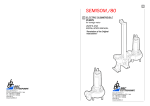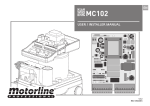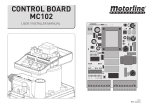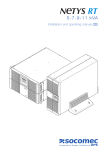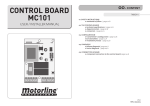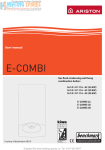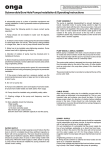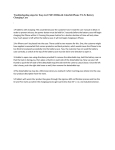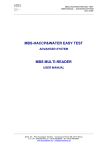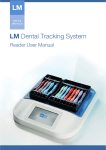Transcript
ENGLISH ENGLISH 1. GENERAL WARNINGS - Read this manual carefully before installing this pump. It contains every necessary information for installation, correct use and maintenance of AQUALIJU pumps. - It's very important that the user reads this manual before using the pump. Any damage caused by failure to observe the directions contained in this manual will not be covered by warranty. - By the time you receive this pump check if it wasn´t damaged during transpor-tation. - In this case, please contact our agent as soon as possible. 2. DANGER - ELECTRIC SHOCK RISK - Do not use in ponds, tanks or swimming pools when people may enter or come into contact with the water. - Make sure that the pump is switched off before installation or maintenance operations. - The unit must always be earthed in accordance with local legislation. - Never use the electric power cable to suspend or transport the pump. CAUTION ! - If the electric cable or has become damaged please contact our agent before any intervention with the pump. 3. OPERATING CONDITIONS - Pumps from AQUALIJU series are suitable for: - Clean water with a maximum temperarure of 35º C and a maximum sand content of 60 3 g/m ; - Minimum internal diameter of well: 115 mm AJ. - Minimum immersion depth: 200 mm; - Maximum submersion depth: 20 m (with suitable cable length); - Maximum starts/hour: 30 at regular intervals. - The electropump cannot be used to move dangerous or inflammable liquids. 5.1. EARTH CONNECTION fig. 1 - The pump must be earthed before any other operation, even if the delivery pipe is a non metallic one. - This pump is not for portable use. - Switch off this pump every time you transport it. - The earth connection is also useful to reduce the risk of galvanic corrosion due to electrolytic action especially with non-metallic delivery pipe and safety rope. 4. INSTALLATION: - Never use the electric power cable to suspend the pump; - Avoid dry running. 4.1. PUMP INSTALLATION IN THE R E S T I N G P O S I T I O N (TANKS): - The pump can be rested on the flat botton surface of a tank, but when sand or particles of sediment are present it's advisable to mount the pump on a surface raised from the bottom level so that abrasive matter is not lifted. 4.2. PUMP INSTALLATION IN THE SUSPENDED POSITION (WELL): - The pump can be held in a suspended position by the metal delivery pipe. - Tighten the threaded pipe joints firmly to avoid loosening during operation. - Position the pump at a distance of at least 0.5m from the bottom of a well so that sand is not lifted (fig. 1). - When a plastic or flexible delivery pipe is used, a nylon safety rope or chain should be utilized for lowering, securing and raising the pump. - Attach the power supply cable to the delivery pipe and to the safety rope with cable clamps at intervals of about 3 m. - The power cable should not be taut. It must allow a certain degree of slackness between the clamps to avoid the risk of strain caused by expansion of the pipe during operation. - Protect the electric power cable from contact with the well wall to prevent damage. 5.2. RESIDUAL CURRENT PROTECTION DEVICE: 0,5m WARNING: It is advisable to install a gate valve at the pump output to avoid deposition and a check valve easily reachable to allow easy pump removal in cleaning and maintenance operations. - Single phase pumps are supplied with a float switch that watches the water level avoiding drops below the suction strainer. - For three-phase pumps we recommend the installation of a control box with a water level protector and its electrodes. 5. ELECTRIC CONNECTION: - The electric connection must be carried out by a qualified electrician. - Single phase pumps equipped with capacitor must be connected as shown in fig. 2. fig. 2 Capacitor Connection CABLE Brown Blue Black Yellow-green Capacitor LINE LINE EARTH - It's advisable to install a height capacity switch (0,03 A) with complemental protection against electric discharges in case of ineffective earthing. - Make sure the frequency and mains voltage correspond with the pump data; - The electric connection must include a multipolar switch or other disconnection device from the mains with a minimum contact separation of at least 3mm on every polles. 5.3. AQUALIJU 230V: - Single-phase pumps are suplied with an incorporated capacitator and a thermal protector so that the motor will stop if overheating is detected and with automatic start up (after cool down 2 to 4 minutes). 5.4. AQUALIJU 400V: - Three-phase pumps must be connected to the power supply line through a control box equipped with: - water level protector with its respective electrodes to prevent the pump against dry runnig; - frequency protetor against phase lack; - thermal protector gauged for the motor mains voltage. 6. STARTING: - Never run the pump dry, not even for a short trial run. - The minimum immersion depth at first start-up must be at least 200mm. ENGLISH - Do not start up the pump with a completely closed shut-off gate valve. - Never take the pump out of the water while it is still operating. - With a three-phase power supply make sure the direction of rotation is correct. - The correct direction of rotation will provide a considerably greater pressure and delivery capacity. - If it's not correct switch off the power, invert the connections of two phases on the control panel, restart and check the pressure or flow rate capacity again. - The pump shall operate within its range of rated performance and the absorbed current indicated must not be exceeded. 7. MAINTENANCE: - Under normal operating condictions the pump will not require maintenance. - If the pump is temporarily used with dirty liquids or water containing chloride, flush the pump briefly with clean water immediatly after use to remove any deposite. - If the pump has not been used for a long time and does not start or gives no water (but electrical connections are in order), the pump must be removed from the water and checked to see if it is choked by any foreign matter or blocked by sediments, deposits or any other cause. The products , referred to in this statement are in accordance with Directive 73/23/EEC (the Low Voltage Directive). Full compliance with essential requirements of the Directive is verified for compliance with standard EN 60335-2-41. 8. PROBLEMS, POSSIBLE CAUSES AND SOLUTIONS Caution! These operations must be carried out by specialized personnel. Before performing any service operation, be sure that the unit is disconnected from the elctric power supply. PROBLEM The electropump does not pump water. The motor does not run. The motor runs but the electropump does not pump water. The electropump stops after running for a short period of time because one of the termal motor circuit breaker trips. POSSIBLE CAUSE - No power. Motor protection tripped. - Demaged capacitator. Shaft blocked - A solid object is blocking the impeller. - The pump is sucking air. - The pump rotates in the wrong direction (Three-phase pumps). - Suction grid blocked. - Check valve blocked. - Low voltage. - The power supply does not correspond with the data on the nameplate. - The pump has run without liquid. SOLUTION - Check the voltage. - Verify the cause and reset the switch. If the thermal circuit breaker has tripped wait for the system to cool down. - Replace the capacitator. - Verify the cause and unblock the electropump. - Disassemble the hydraulic part and verify if the impellers rotate freely. As electrobombas Aqualiju, referidas nesta declaração, estão em conformidade com a Directiva 73/23/CEE (Directiva de Baixa Tensão). A plena concordância com os requesitos essenciais da Directiva é comprovada pela conformidade com a norma EN 60335-2-41. - Make sure that the joints are air-tight. Check that the liquid has not dropped below the minimum level. - Invert the electric phase connection of rotation. - Clean the suction grid. Clean or replace valve. Use electric cables of larger diameter. - Check the voltage on the power supply cables leads. - If the pump is equipped with a float switch, verify if this is functioning working it manualy. Reestablish the water level before restart the pump. If in spite of carring out the above operations the problem still persists contact the nearest service centre. (Gerencia)


